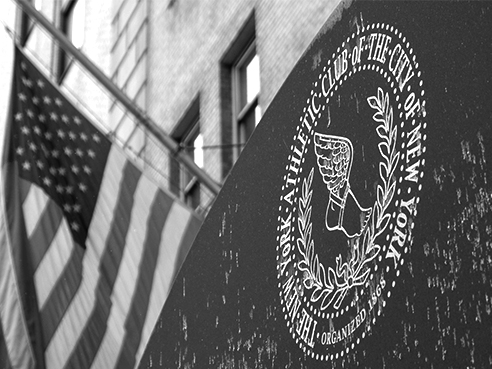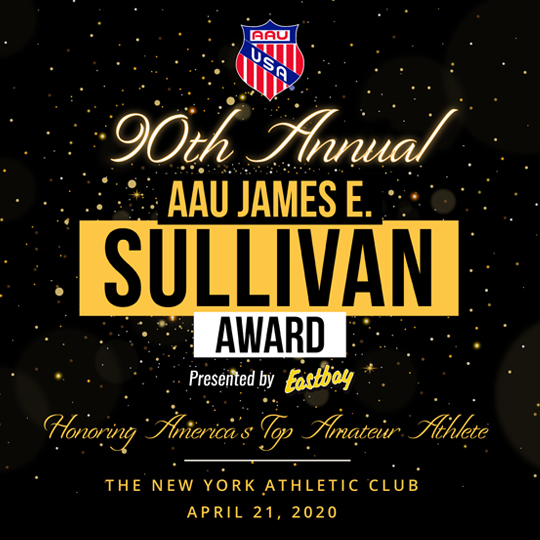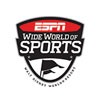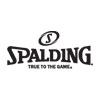Elegance in Athletics
10/24/2019
As AAU celebrates the 90th anniversary of the AAU James E. Sullivan Award, announced for April 21, 2020, the New York Athletic Club takes a look back at the history between the two organizations.
Original article “Elegance in Athletics” was written by Laura Walsh in the Winged Foot magazine.
You can read the full magazine here.
On April 6, 1888, the Amateur Athletic Union held its first championships at the Metropolitan Opera House, located at 39th Street and Broadway in Manhattan. Stagehands replaced theatrical scenery with a boxing ring, a wrestling mat and a fencing piste, and 3,000 enthusiastic spectators – both men and women, many in evening dress – crowded in to enjoy the event. They cheered for their champions and hissed at their adversaries, and their zeal was described in detail in a New York Times article the next morning. No thought was given to the seeming incongruity of a sporting event in so elegant a setting; but, that perception may seem less contradictory when set within its context.
The Amateur Athletic union was founded by James E. Sullivan in January of 1888, a mere three months prior to the raucous spectacle held at the Opera House. Sullivan ran track for the Pastime Athletic Club in the 1870s and ‘80s and created The Athletic News in 1880. His intent in founding the AAU was the propagation of amateur athletics and to establish common standards within these sports. Hitherto, that role had been largely filled by the New York Athletic Club, founded almost 20 years earlier and, with admirable prescience, deeming that oversight of so many nascent sports should be handled by a body properly and formally organized for that task. Initially, those duties fell to the National Association of Amateur Athletes of America (NAAAA), which was founded in 1879 and which served as the governing body of amateur athletics until the AAU came into being nine years later.
While athletics in the USA was evolving, so too were the arts. The Metropolitan Opera was founded in 1880 by “nouveau riche” New Yorkers – industrialists and businessmen – who had been excluded by the Old Guard who frequented the Academy of Music opera house. The likes of the Roosevelt, Vanderbilt and Morgan families soon became regular attendees at performances at the Met, as it became colloquially known. In 1883, the Metropolitan Opera moved into its first proper home, the location, five years later, of the AAU’s inaugural event.
Although its roots lay firmly in athletics, the NYAC had quickly become an organization of cultural significance, with many of its members being scions of New York society. It may hardly been of great surprise, then, that Club members, as well as those of other prestigious clubs – the aforementioned Pastime AC and the Manhattan Athletic Club, to name just two – should be denizens of the Met while also being enthusiastic advocates of the AAU and propagators of athletics. Those worlds collided to great acclaim in the Met in April, 1888.
The highlight of the night was the final event, a lightweight boxing bout between George Thompson (NYAC) and J.J. Sampson (Pastime AC). Henry Buermeyer, a founding father of the NYAC (and clearly trusted to be impartial), served as referee. Thompson emerged as the victor after a thrilling bout.
In addition to Buermeyer, New York Athletic Club members made up the majority of the officials entrusted to oversee this event. A.V. de Goiciuria, NYAC president in 1888, and M.W. Phillips served as judges of boxing; W.G. Morse, Harvard alumnus and NYAC sprinter, served as Master of Ceremonies; George Goldie, the NYAC;s famed and first Athletic Director, and Ronald Thomas judged the wrestling events; Dr. M.J. Echeverria, Ronald Thomas and Regis Senac (NYAC fencing instructor), served as the jurors of fencing. William H. Robertson, an NYAC member who served as the timekeeper, was known for his expertise in the fields of building running tracks and making boxing gloves. He was later assigned the task of building the track for the athletic competitions at the St. Louis World’s Fair in 1904. Initially, Robertson ran for the Williamsburg Athletic Club, where he broke the world amateur record for 10 miles. Displaying such prowess, it was almost inevitable that he should subsequently become a member of the New York Athletic Club.
Athletes in a unique and elegant setting is no less mutually exclusive today than it was in 1888. The NYAC stands in testimony to that fact. World class judo and wrestling tournaments are held annually in the City House, while Beefsteak and Boxing in the Main Dinig Room is among the most enthusiastically supported events on the Club’s calendar. At Travers Island, while the five-laps-to-the-mile cinder track – once the finest and fastest in the USA – is long gone, members can log miles in the Field House enjoying a view that is almost (thankfully) breath-taking.
Similarly, the New York Athletic Club and the AAU remain connected. The most renowned award in amateur athletics, the AAU’s James E. Sullivan Award, is presented annually at the City House to the best amateur athlete in the United States. Established in 1930, past winners included Wilma Rudolph (1961), Carl Lewis (1981), Peyton Manning (1997), Michelle Kwan (2001), Michael Phelps (2003) and Shawn Johnson (2008). Volleyball player Kathryn Plummer, outside hitter for Stanford University, became the 89th recipient of the award.

You can read the full magazine here.
On April 6, 1888, the Amateur Athletic Union held its first championships at the Metropolitan Opera House, located at 39th Street and Broadway in Manhattan. Stagehands replaced theatrical scenery with a boxing ring, a wrestling mat and a fencing piste, and 3,000 enthusiastic spectators – both men and women, many in evening dress – crowded in to enjoy the event. They cheered for their champions and hissed at their adversaries, and their zeal was described in detail in a New York Times article the next morning. No thought was given to the seeming incongruity of a sporting event in so elegant a setting; but, that perception may seem less contradictory when set within its context.
The Amateur Athletic union was founded by James E. Sullivan in January of 1888, a mere three months prior to the raucous spectacle held at the Opera House. Sullivan ran track for the Pastime Athletic Club in the 1870s and ‘80s and created The Athletic News in 1880. His intent in founding the AAU was the propagation of amateur athletics and to establish common standards within these sports. Hitherto, that role had been largely filled by the New York Athletic Club, founded almost 20 years earlier and, with admirable prescience, deeming that oversight of so many nascent sports should be handled by a body properly and formally organized for that task. Initially, those duties fell to the National Association of Amateur Athletes of America (NAAAA), which was founded in 1879 and which served as the governing body of amateur athletics until the AAU came into being nine years later.
While athletics in the USA was evolving, so too were the arts. The Metropolitan Opera was founded in 1880 by “nouveau riche” New Yorkers – industrialists and businessmen – who had been excluded by the Old Guard who frequented the Academy of Music opera house. The likes of the Roosevelt, Vanderbilt and Morgan families soon became regular attendees at performances at the Met, as it became colloquially known. In 1883, the Metropolitan Opera moved into its first proper home, the location, five years later, of the AAU’s inaugural event.
Although its roots lay firmly in athletics, the NYAC had quickly become an organization of cultural significance, with many of its members being scions of New York society. It may hardly been of great surprise, then, that Club members, as well as those of other prestigious clubs – the aforementioned Pastime AC and the Manhattan Athletic Club, to name just two – should be denizens of the Met while also being enthusiastic advocates of the AAU and propagators of athletics. Those worlds collided to great acclaim in the Met in April, 1888.
The highlight of the night was the final event, a lightweight boxing bout between George Thompson (NYAC) and J.J. Sampson (Pastime AC). Henry Buermeyer, a founding father of the NYAC (and clearly trusted to be impartial), served as referee. Thompson emerged as the victor after a thrilling bout.
In addition to Buermeyer, New York Athletic Club members made up the majority of the officials entrusted to oversee this event. A.V. de Goiciuria, NYAC president in 1888, and M.W. Phillips served as judges of boxing; W.G. Morse, Harvard alumnus and NYAC sprinter, served as Master of Ceremonies; George Goldie, the NYAC;s famed and first Athletic Director, and Ronald Thomas judged the wrestling events; Dr. M.J. Echeverria, Ronald Thomas and Regis Senac (NYAC fencing instructor), served as the jurors of fencing. William H. Robertson, an NYAC member who served as the timekeeper, was known for his expertise in the fields of building running tracks and making boxing gloves. He was later assigned the task of building the track for the athletic competitions at the St. Louis World’s Fair in 1904. Initially, Robertson ran for the Williamsburg Athletic Club, where he broke the world amateur record for 10 miles. Displaying such prowess, it was almost inevitable that he should subsequently become a member of the New York Athletic Club.
Athletes in a unique and elegant setting is no less mutually exclusive today than it was in 1888. The NYAC stands in testimony to that fact. World class judo and wrestling tournaments are held annually in the City House, while Beefsteak and Boxing in the Main Dinig Room is among the most enthusiastically supported events on the Club’s calendar. At Travers Island, while the five-laps-to-the-mile cinder track – once the finest and fastest in the USA – is long gone, members can log miles in the Field House enjoying a view that is almost (thankfully) breath-taking.
Similarly, the New York Athletic Club and the AAU remain connected. The most renowned award in amateur athletics, the AAU’s James E. Sullivan Award, is presented annually at the City House to the best amateur athlete in the United States. Established in 1930, past winners included Wilma Rudolph (1961), Carl Lewis (1981), Peyton Manning (1997), Michelle Kwan (2001), Michael Phelps (2003) and Shawn Johnson (2008). Volleyball player Kathryn Plummer, outside hitter for Stanford University, became the 89th recipient of the award.

 Email
Email Print
Print









